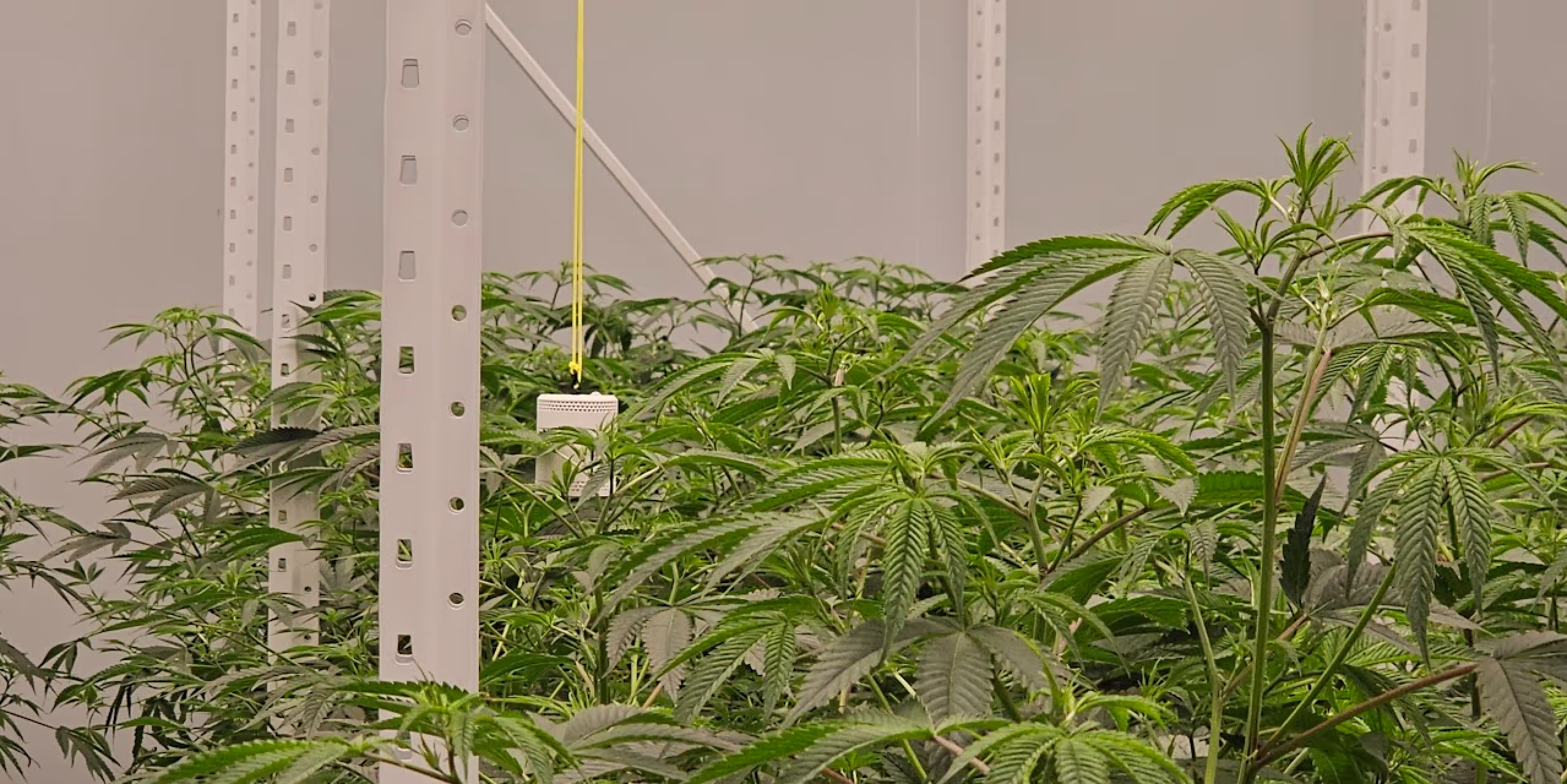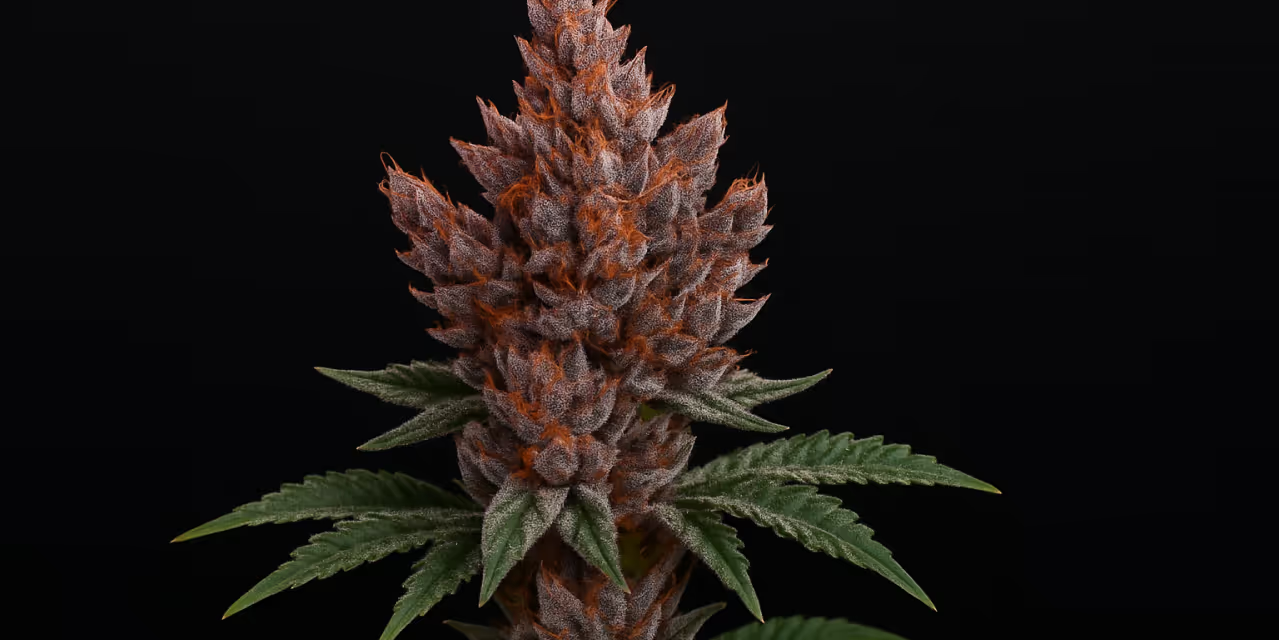Cannabis bonsai: A unique growing challenge


Are you ready to turn your cannabis plant into a living piece of art?
Growing a cannabis bonsai is not just an aesthetic endeavour but a rewarding challenge that can elevate your growing skills.
Without proper techniques, your cannabis bonsai might not thrive, leading to frustration and wasted effort.
In this post, we’ll cover pot size, watering, pruning, environmental considerations, and advanced techniques to help you master the art of cannabis bonsais.
Trust us; we’ve got the expert tips you need to succeed.
Disclaimer: Any information given on this site is for educational purposes only. Please ensure if you’re growing cannabis, you’re doing so by the law and subject to appropriate permissions and licenses of the applicable country.
What does the word bonsai mean?
Bonsai is part of Japanese culture. It’s an ancient art form involving the cultivation of miniature trees in containers. The word itself is a combination of two Japanese terms:
- Bon (盆): meaning "tray" or "pot"
- Sai (栽): meaning "planting" or "cultivation"
The word bonsai means “planted in a container.
Essentially, bonsai is the practice of growing trees in trays or pots, carefully shaping and pruning them to maintain a small size while mimicking the appearance of full-sized trees in nature.

What is a cannabis bonsai?
Cannabis bonsai, cannabonsai or marijuana bonsai is when a cannabis plant has been cultivated to maintain a miniature size through techniques similar to traditional bonsai.
Unlike commercial cannabis cultivation, which focuses on maximizing growth and yield, bonsai cannabis plants or cannabonsai trees are also grown for their aesthetic appeal and small stature.
These small bonsai trees can be a stunning addition to your garden or home, offering beauty and tranquillity at a fraction of the plant’s natural size.
By confining the plant's root system to a small container and consistently trimming its branches, you can create compact and aesthetically pleasing canna bonsai plants that reflect the harmony and balance in nature.
While it's a challenging endeavour that requires dedication, you can create your own cannabis bonsai, and the result is a unique and visually striking specimen.

The art of bonsai cannabis
The art of bonsai is about more than just keeping combining. It’s a meditative process thacreatingatience, creativity, and a deep connection with your plant.
As you shape and train your own cannabis bonsai, you’ll find a rewarding relationship developing between you and your plant.
The goal is not to push your canna bonsai to its limits but to keep it happy and healthy while achieving the desired shape and appearance.
This mindful approach makes bonsai cannabis cultivation a fulfilling experience for any grower.
Benefits of growing cannabis bonsai
The benefits of growing a cannabis bonsai tree extend beyond its aesthetic appeal. The process can be deeply meditative and therapeutic, providing a sense of accomplishment and tranquillity.
A well-crafted cannabis bonsai can be a beautiful focal point in your home or garden, showcasing your dedication and artistic skills.
Liking what you’re reading? Want to grow like a pro? Subscribe to the Grow The Best newsletter here!

How to grow cannabonsai
To successfully grow a cannabis bonsai, you need to master several essential techniques.
Each aspect of cultivation, from pot size to pruning, plays a crucial role in the health and appearance of your bonsai cannabis plant.
Here’s a step-by-step guide to help you get started:
1. Choose the right strain
Selecting the right cannabis strain is crucial for bonsai success. Opt for strains or specific species known for their compact growth and resilience to training.
What is the best strain for cannabis bonsai?
Here are some strains known for their suitability, which can develop a thicker resistant stem and small leaves:
- White Widow: Known for its hardy nature and adaptability, White Widow is an excellent choice for bonsai cultivation. It responds well to pruning and training, making it easier to shape and maintain.
- Northern Lights: This strain is popular for its resilience and manageable growth patterns. Northern Lights can handle stress well, which is crucial for the frequent training and pruning required in bonsai cultivation.
- Blueberry: With its compact growth structure and beautiful colouration, Blueberry is an attractive option for cannabis bonsai. It’s relatively easy to manage and responds well to the bonsai training techniques.
- OG Kush: OG Kush is another strain that works well for bonsai due to its robust growth and ability to thrive under various conditions. Its strong branches can be shaped effectively to create an appealing bonsai form.
- Jack Herer: This strain is known for its vigorous growth and flexibility. Jack Herer can be pruned and trained into various shapes, making it a versatile choice for bonsai enthusiasts.
Selecting a strain with a resilient and adaptable growth pattern will help ensure your cannabis bonsai thrives.

2. Select a small container
The size of the pot is crucial. Small pots restrict the root system, helping to keep the plant’s size manageable. Ensure the pot has good drainage to prevent root rot.
Regular repotting is essential for bonsai tree health. It prevents root bound issues and provides fresh nutrients for optimal growth.
3. Planting
Start with healthy cannabis seeds or a clone. Plant it in well-aerated soil in your little pot. Ensure the soil is nutrient-rich to support initial growth.
4. Pruning and training
Pruning is perhaps the most critical aspect of bonsai cultivation. As your cannabis plant grows, regularly prune the roots and branches, being careful not to damage the main stem.
Prune offshoot branches and side shoots and put a wooden stake into the soil alongside the plant to encourage a strong main stem.
Most growers prefer to use low-stress training (LST) techniques to gently bend branches into the desired direction and guide the plant into their desired shape. Ensure the plant doesn’t surpass their desired height.
You can also tie stems in knots or use wooden stakes to create interesting shapes and support the structure.
5. Watering and feeding
Due to the small pot, regular watering and feeding are essential. The limited soil volume means nutrients can be depleted quickly.
Use a balanced fertiliser and water consistently. Avoid overwatering by allowing the soil to dry slightly between waterings
6. Light and environment
Creating the right environment is essential for the healthy growth of your cannabis bonsai.
Provide adequate light, either natural sunlight or a grow light, to ensure healthy growth. Ensure a well ventilated room with a stable temperature and relative humidity level.
Remember, the goal is to work with your environment, not against it. Avoid trying to grow a cannabis bonsai in unsuitable conditions, like a cold winter climate.
7. Maintenance
Continuously monitor your cannabonsai for pests and nutrient deficiencies. Regularly prune to maintain the shape and health of the plant.
By following these steps, you can successfully grow a beautiful and healthy cannabonsai that combines the art of bonsai with the unique characteristics of cannabis.

How long do cannabis bonsai plants last?
Cannabis bonsai plants, like traditional bonsai trees, can last for many years with proper care and maintenance.
The longevity of bonsai cannabis plants depends on various factors, including the care provided, the environment, and the specific strain of cannabis being grown.
Typically, a well-maintained cannabis bonsai can thrive for several years, as long as it is kept healthy and its growing conditions are optimal.
While the allure of harvesting your cannabis bonsai's buds is undeniable, the journey doesn't have to end with the drying and curing process.
A light cycle adjustment is necessary to restore your cannabis bonsai to its vegetative state. Increase the light exposure to at least 18 hours per day to stimulate new growth.
Complement this with a nitrogen-rich nutrient solution to encourage vigorous development.
It's important to note that successive harvests can impact the plant's vitality. Over time, the stems might become less pliable, making shaping more challenging.
Additionally, the potency of subsequent harvests may diminish. To mitigate these factors, regular root pruning and consistent nutrient supplementation are crucial for continued high quality crops..
To rejuvenate your bonsai effectively, follow these steps:
- Selective pruning: Focus on removing the top third of the plant’s main and side branches where the most mature buds are located.
- Thorough cleaning: Remove the middle section's foliage, including old and yellow leaves, to encourage new growth.
- Preserve lower growth: Maintain the lower third's small shoots, as these will be the foundation for the plant's regeneration.
By adhering to these guidelines and providing optimal care, you can extend the life of your cannabis bonsai, allowing you to enjoy its unique beauty year after year.

Advanced bonsai cannabis techniques
For those looking to take their bonsai tree skills to the next level, advanced techniques can add an extra layer of artistry to your plant.
Vegetative and flowering stages
It is crucial to manage the vegetative phase and transition smoothly into the flowering stage.
During the vegetative stage, focus on maintaining a healthy growth rate with proper feeding and light.
As your plant enters the flowering stage, continue to monitor its health, provide support for growing buds and adjust care practices to ensure a successful bloom.
For advanced growers looking to really dial in their marijuana bonsai setup, check out these specific resources for VPD in veg and VPD in flower alongside PPFD in veg and PPFD in flower.
Common challenges and solutions
Growing a cannabis bonsai comes with its own set of challenges. Root binding, nutrient deficiencies, and overwatering are common issues.
To prevent root binding, regularly trim the roots and repot your plant as needed.
Address nutrient deficiencies by using a balanced fertiliser and adjusting feeding schedules.
Avoid overwatering by allowing the soil to dry slightly between waterings.
Takeaways
Growing a cannabis bonsai is a rewarding yet challenging endeavour for cannabis growers that combines artistry with horticultural expertise.
By understanding the fundamental principles of bonsai cultivation and applying them to the unique characteristics of cannabis, you can create a stunning and unique plant.
Remember, patience is key. It takes time and dedication to shape your cannabis bonsai into the desired form.
Whether you're a seasoned grower or a novice enthusiast, the world of cannabis bonsai offers endless possibilities for exploration and creativity.
Embrace the journey, experiment with different techniques, and enjoy the process of nurturing your own living masterpiece.
With careful attention and dedication, you can transform a simple cannabis plant into a captivating work of art that will be the envy of many growers.
Happy growing!
FAQs
Can you have a cannabis bonsai mother plant?
Yes. Cannabis bonsai mother plants are not only possible but also highly beneficial, especially if you have limited space.
Because of their short stature, bonsai plants are perfect for maintaining mother plants. This provides an endless source of clone clippings whilst not taking up too much space, saving room and resources.
Key reasons to create a bonsai mother plant:
- Space efficiency: Bonsai mothers take up minimal space.
- Cost-effective: Requires less light and nutrients compared to larger plants.
- Preservation of genetics: Allows you to maintain desirable traits.
- Consistent clones: Provides a steady supply of identical clones.
How old was the oldest cannabonsai?
Unfortunately, there isn't a definitive record of the oldest cannabis bonsai plant. While traditional bonsai trees can live for centuries, cannabis plants have a different life cycle.
Maintaining a cannabis plant in bonsai form requires constant care and manipulation to prevent it from flowering. That said, there are reports of cannabis bonsai plants living for several years.
With proper care and techniques, it's theoretically possible to extend the lifespan of a cannabis bonsai significantly.
Join the Grow The Best newsletter for top growing tips and tricks straight to your inbox. Sign up below!









.avif)








